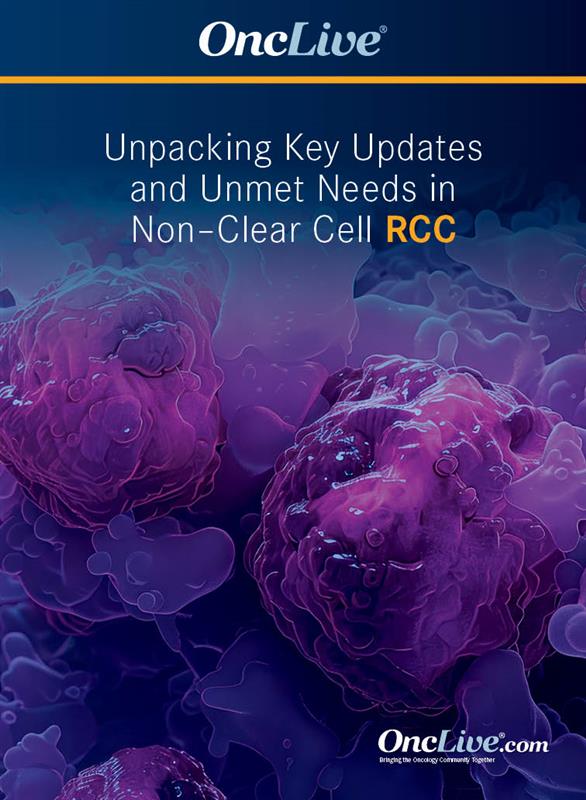Commentary
Video
Supplements and Featured Publications
Dr McGregor on the Updated NCCN Guidelines for Non–Clear Cell RCC
Bradley McGregor, MD, discusses the current NCCN guideline recommendations for the treatment of patients with divergent RCC histologies.
Bradley McGregor, MD, director, clinical research, Lank Center for Genitourinary Oncology, Marra Lochiatto Investigator, Dana-Farber Cancer Institute; assistant professor, medicine, Harvard Medical School, discusses 2024 updates to the National Comprehensive Cancer Network (NCCN) Guideline recommendations for the treatment of patients with renal cell carcinoma (RCC) with divergent histologies.
Although NCCN Guidelines do not offer histology-specific treatment recommendations for patients with non–clear cell RCC (non-ccRCC) histologies, they still offer research-supported guidance regarding the management of these disease subtypes, McGregor begins. Immuno-oncology/TKI doublets, including lenvatinib (Lenvima) plus pembrolizumab (Keytruda) and cabozantinib (Cabometyx) plus nivolumab (Opdivo), have shown activity in patients with divergent RCC histologies, he says.
In the phase 2 KEYNOTE-B61 trial (NCT04704219), the combination of pembrolizumab and lenvatinib in the frontline setting yielded a confirmed objective response rate (ORR) of 51% (95% CI, 43%-59%) in patients with advanced non-ccRCC. This included an 8% confirmed complete response (CR) rate and a 42% confirmed partial response rate. This patient population included those with chromophobe, papillary, and translocation histologies, McGregor notes.
Furthermore, the combination of cabozantinib and nivolumab was evaluated in patients with advanced non-ccRCC in a phase 2 trial (NCT03635892). The overall population (n = 40) included patients with papillary, translocation, and unclassified RCC. Findings showed that the ORR was 48% (95% CI, 31.5%-63.9%). In patients with papillary disease, the ORR was 47% (95% CI, 30%-64%). The median PFS was 13 months (95% CI, 7-16) in the overall population, and the median overall survival was 28 months (95% CI, 23-43).
Based on the data from KEYNOTE-B61 and the phase 2 study, the NCCN Guidelines list both doublets as preferred frontline treatment options for patients with non-ccRCC. The guidelines also recommend the use of upfront cabozantinib monotherapy for these patient populations based on data from the phase 2 PAPMET trial (NCT02761057), McGregor adds. Enrollment in a clinical trial is also a preferred recommendation. As future research aims to determine the optimal therapies for each disease subtype, NCCN Guideline recommendations may be further divided by histology and genomics, McGregor concludes.










